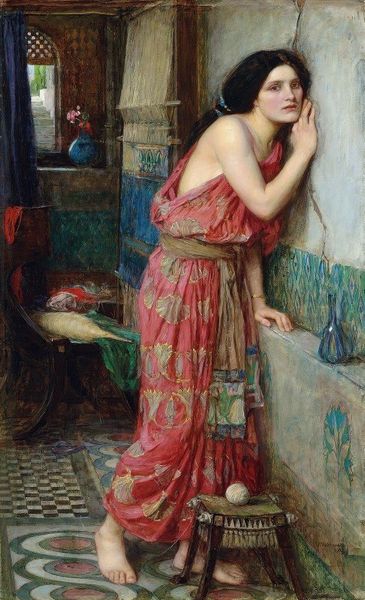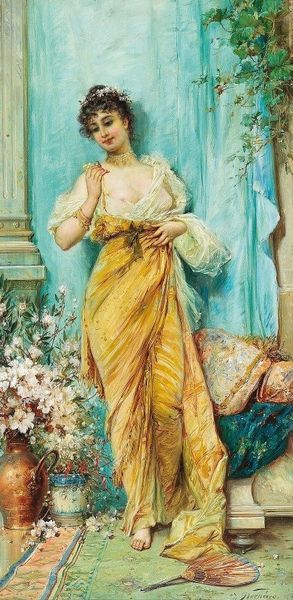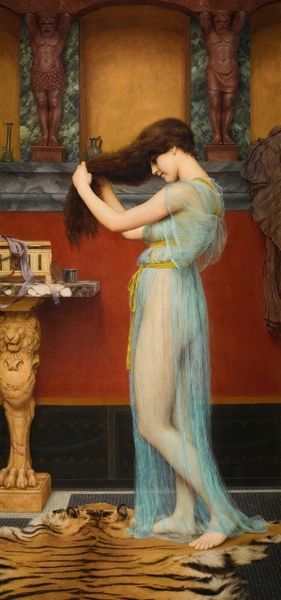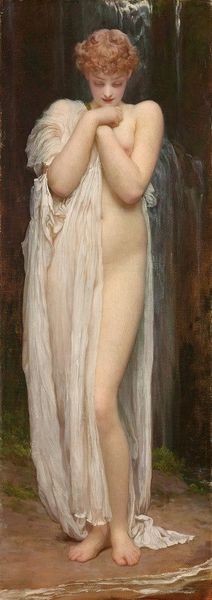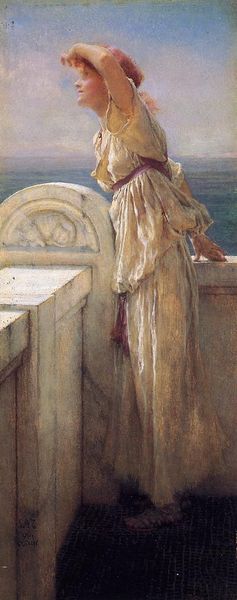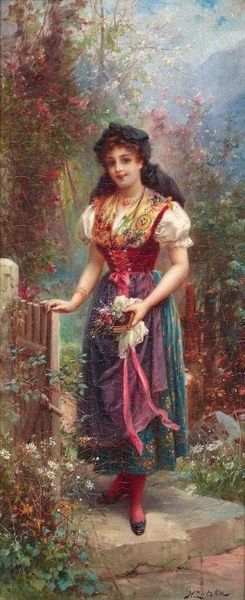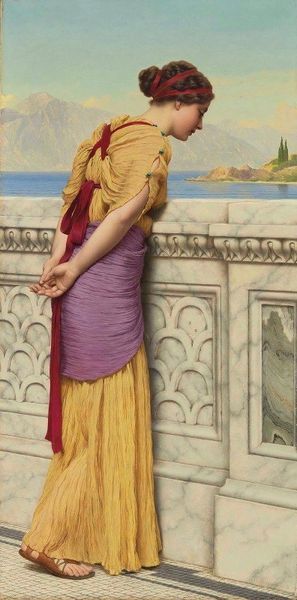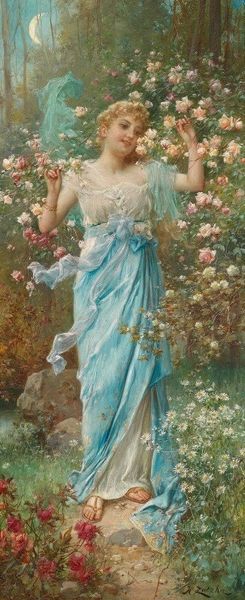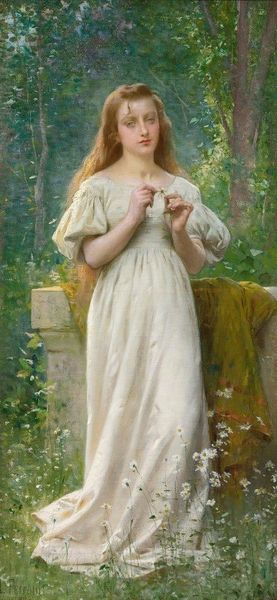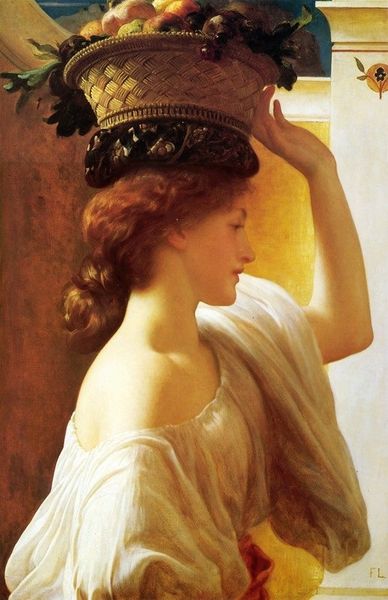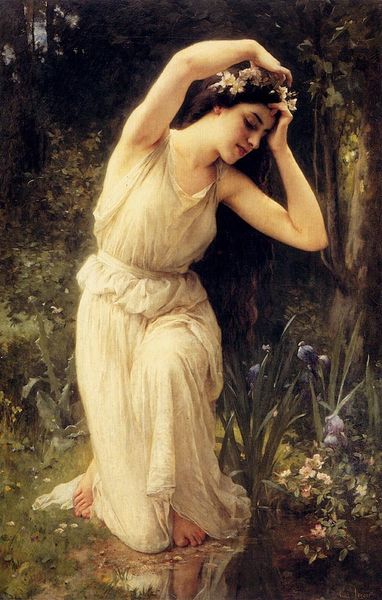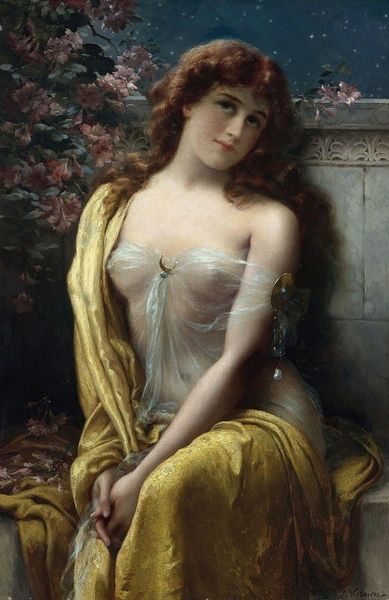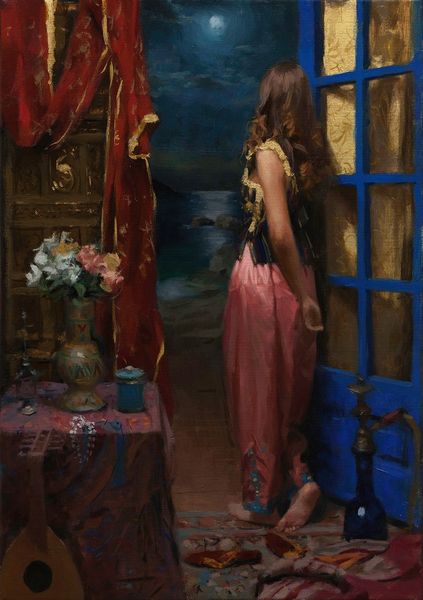
painting, oil-paint
#
portrait
#
painting
#
oil-paint
#
genre-painting
#
academic-art
#
realism
Copyright: Public domain
Curator: It's Ciseri's "Penitent Magdalene," created in 1864 using oil paints. There's such palpable emotion. What’s your immediate impression? Editor: Melancholy, definitely. And vulnerability. The way she's almost swallowed by her own hair, it feels like she’s trying to hide, disappear even. Curator: Absolutely. Hair as a shield, a veil. And look at how Ciseri renders it - thick, almost a curtain. Hair, especially unbound hair, has historically symbolized a woman’s sensuality, her power. Here, it signifies sorrow, maybe even shame. Editor: Precisely! And that simple earthen-toned robe. The choice not to emphasize her body. Instead, it underscores the spiritual transformation she's undergoing, the shedding of her former identity. This image touches a deep well of archetypes about transgression and redemption. Curator: True. Academic art often sought to convey clear moral messages through carefully chosen imagery and poses. The bare feet—humility, connection to the earth, a literal grounding in her repentance. But even within the academic style, Ciseri manages to imbue the scene with this raw, internal struggle. Editor: It works because it’s intimate. She's not posing, she's not performing. This isn't a grand spectacle of guilt, but a private moment. Her head is bowed, not in theatrical display but inward in a private dialogue. The single, lonely tear perhaps! Curator: Ciseri really nails that interiority. The academic approach coupled with the very subtle rendering, it makes the viewer feel as though they've intruded upon her solitude, like this a genuine display of regret and contemplation. Editor: A feeling that repentance can be an un-private spectacle of display in the 21st century, as opposed to its origins as a deep and moving form of contrition! A loaded history. I find myself unexpectedly moved. Curator: It's an interesting exploration and fusion of style and substance. It does sit with you a while longer after the gaze has moved away from the canvas.
Comments
No comments
Be the first to comment and join the conversation on the ultimate creative platform.
